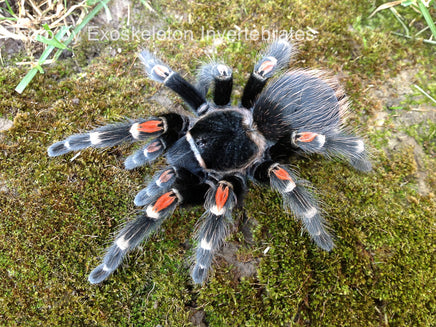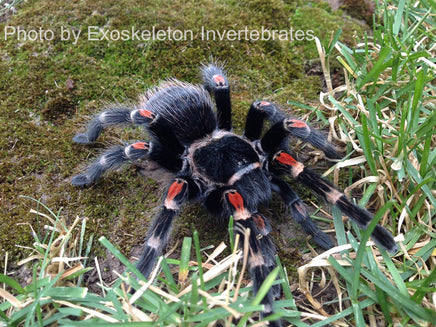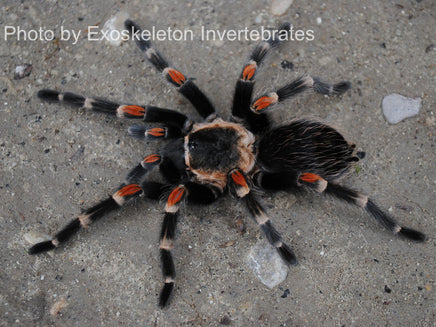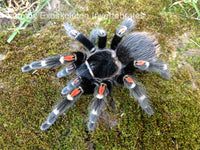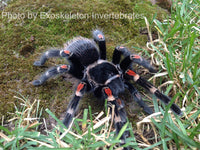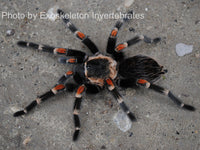Meet the Brachypelma auratum, a true gem in the tarantula world. This species, often referred to as the Mexican Flame Knee, is known for its striking coloration. With deep black legs accentuated by vibrant orange and red markings on their knees, they're a visual spectacle. Perfect for both beginners and seasoned enthusiasts, the Flame Knee combines beauty with a docile nature, making it a favorite in any collection.
Care Details:
-
Temperature: For the Brachypelma auratum, maintain a temperature range of 75 to 85°F (24 to 29°C). Remember, a warmer environment can accelerate their growth and molting process, but they are adaptable and easy to maintain.
-
Humidity: This species thrives in a humidity level of around 50-60%. While water dishes aren't necessary, and I don't use them personally, they won't harm your tarantula if you choose to include one.
-
Housing: Brachypelma auratum is a terrestrial species. For babies, a 1 oz to 4oz deli container with needle-made ventilation is ideal. For larger juveniles and adults, an enclosure that's 2 to 3 times their size provides ample space. Housing flexibility is a plus with this species.
-
Diet: I feed my Brachypelma auratum a variety of crickets and cockroaches, like Dubia and Red-runner roaches. Baby tarantulas do well with smaller prey like baby crickets and roaches. If you only have access to one type of prey, that's fine. If prey is too big, simply crush its head and leave it in the enclosure. Always remove uneaten food to avoid mold. For a special treat, an occasional pinky or hopper mouse is a nice addition, but avoid overfeeding these, as too much calcium can be harmful.
In-depth Facts:
- Latin Name: Brachypelma auratum
- Common Names: Mexican Flame Knee
- Locale: This species is native to the Pacific coast of Mexico.
- Category: Terrestrial. They do not web extensively, but are always out :)
- Size: Females can grow up to 6 inches, with males slightly smaller.
- Urticating Hairs: Yes, they have urticating hairs.
- Growth Rate: Moderate. Not the fastest, but not exceptionally slow.
- Life Span: Females can live up to 25 years, while males have a shorter lifespan.
- Recommended Levels: Suitable for everyone, from beginners to experienced keepers.
Stay Connected:
- Instagram: Follow my Instagram, I'm most active here.
- YouTube: For care and education videos, check out my YouTube channel.
- Facebook: Over here I have all my reviews.
- TikTok: Visit my TikTok for additional content.
Safety Disclaimer:
Experiencing a tarantula bite is an extremely rare occurrence, and it's important to note that there have been no recorded fatalities due to a tarantula bite. The venom potency varies across species, with Old World tarantulas generally having stronger venom than their New World counterparts. Within the Old World category, the Poecilotheria genus is known for having particularly potent venom.
It's crucial to approach tarantulas with respect and understanding. If you happen to get bitten, which is unlikely, the key is to stay calm. In most cases, the discomfort is superficial and subsides within a few minutes to a few hours. However, bites from species with more potent venom may result in symptoms lasting up to a week. Remember, larger tarantulas tend to have more venom than smaller ones.
Please be aware that I cannot assume responsibility for bites. Tarantula handling should be done at your own risk. In my 11 years of experience with these creatures, I have only been bitten once, by a species with highly potent venom. While the experience was painful, the symptoms had completely disappeared after a week.
Handle tarantulas responsibly, and always prioritize your safety and the well-being of the tarantula.
